#la souriante madame beudet
Text
a series of warnings from your resident film student
the kid with charlie chaplin--safe
the passion of joan of arc--safe
the cabinet of doctor caligari--safe
la souriante madame beudet--safe
la jetee--safe
a trip to the moon--safe
the great train robbery--safe
troubles of a grasswidower--safe
some of these you may already have warnings for, but i've had to watch them all over the past three or so weeks in my film program, so i figured i may as well just give warnings for all of them.
#submission#the kid with charlie chaplin#the passion of joan of arc#the cabinet of doctor caligari#la souriante madame beudet#a trip to the moon#la jetee#the great train robbery#troubles of a grasswidower
15 notes
·
View notes
Photo

new-to-me #881 - La souriante Madame Beudet (The Smiling Madame Beudet)
#2022 in Films#Germaine Dulac#La souriante Madame Beudet#The Smiling Madame Beudet#silent film#52 Films By Women#Directed By Women
3 notes
·
View notes
Text
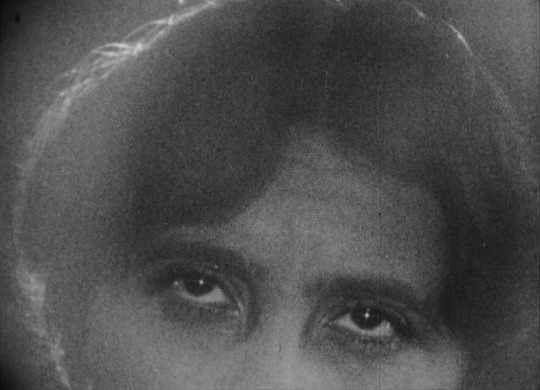
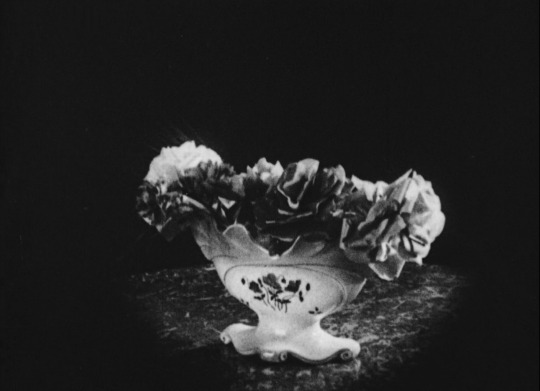
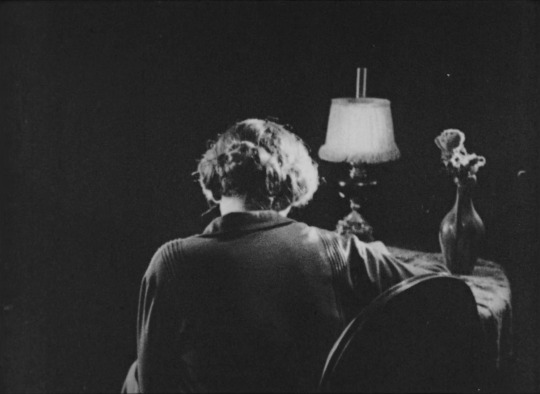
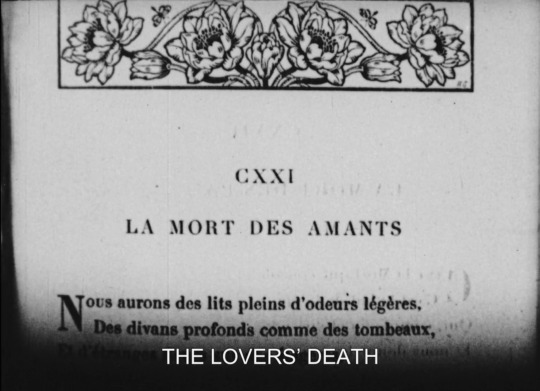
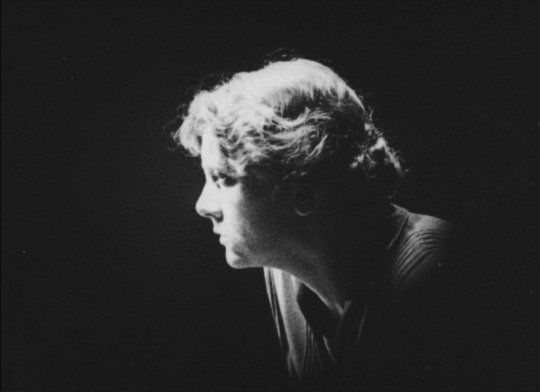

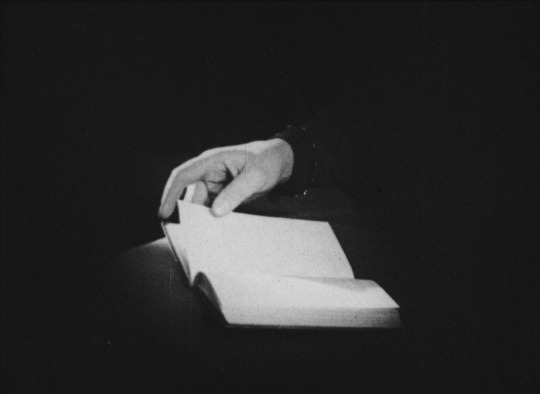

La Souriante Madame Beudet / The Smiling Madame Beudet (1923) | dir. Germaine Dulac
173 notes
·
View notes
Text
Germaine Dulac
Germaine Dulac was born in 1882 in Amiens, France. Dulac directed the 1928 film La coquille et le clergyman, which is widely regarded as the first surrealist film. She is also known for the 1923 feminist film La Souriante Madame Beudet. Not only was Dulac an important figure in the development of 1920s French Avant Garde cinema, but she also helped legitimize cinema as a form of art on the same level as music, dance, and theater.
Germaine Dulac died in 1942 at the age of 59.
11 notes
·
View notes
Text
Germaine Dulac
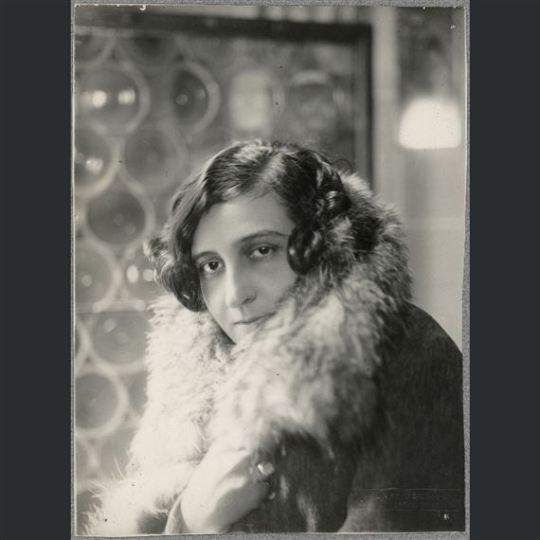
Germaine Dulac, regista e produttrice e teorica cinematografica, antesignana dell’avanguardia francese, ha giocato un ruolo fondamentale nell’evoluzione del cinema inteso come arte e come pratica sociale.
Femminista e socialista, ha sperimentato e portato avanti il suo concetto di cinema come strumento per veicolare idee e progresso.
Unica donna protagonista della scena impressionista e prima a portare la condizione femminile e la difficoltà dei rapporti di coppia sullo schermo, ha diretto più di 30 opere.
Ha propugnato una fusione tra strutture narrative del cinema di consumo e stile dell’avanguardia, tra industria e arte, formalismo e psicologismo.
Nata Charlotte Elisabeth Germaine Saisset-Schneider ad Amiens, in Francia, il 17 novembre 1882, era sposata con il romanziere Louis-Albert Dulac con cui, nel 1915 ha creato la casa di produzione Delia e di cui ha tenuto il cognome anche dopo il loro divorzio. Sua compagna di una vita è stata la regista Marie-Anne Colson-Mallevile.
Agli inizi del ‘900 ha scritto, da critica teatrale per il periodico femminista La française, di cui divenne direttrice.
Nel 1915 ha esordito al cinema con Les sœurs ennemies, i suoi primi film più conosciuti sono La cigarette (1919) e La fête espagnole (1920). Del 1921 è La belle dame sans merci, che è la storia di un adulterio dove acquistano un ruolo centrale l’ambientazione, la scenografia e gli oggetti quotidiani, attraverso un uso fugace ma ripetuto del dettaglio. La sua opera più celebrata La souriante madame Beudet del 1923, è un dramma psicologico che affronta il tema del rapporto di coppia, raccontando di una vita coniugale regolata dalla noia e dalle convenzioni borghesi.
In una società traumatizzata dalla guerra e segnata da un netto contrasto tra un discorso morale ufficiale e conservatore e le nuove libertà dei ruggenti anni ’20, riteneva che il moderno strumento del cinema potesse esprimere, meglio di qualsiasi altra arte, la “vita interiore” e la realtà sociale dei nuovi uomini e delle nuove donne.
Nei suoi film, carichi di bellezza, complessità e audacia, rendeva astratte associazioni visive ed effetti tecnici per trasmettere i suoi ideali sociali progressisti, attraverso una complessa rete di significati basati sulle suggestioni.
Dopo il 1924 si è impegnata per sviluppare nell’opinione pubblica l’interesse per la settima arte attraverso la fonazione dei cineclub. Ha fatto parte della cosiddetta seconda avanguardia, creando impasti di musica e immagini con Disque 927 (1927) o Thèmes et Variations (1928). Intraprendendo la strada di film senza narrazione, ha portato sullo schermo il soggetto surrealista di Antonin Artaud La coquille et le clergyman, del 1928.
Con l’avvento del sonoro, non potendo più realizzare i suoi progetti in piena libertà, ha rinunciato a proposte più commerciali per dedicarsi esclusivamente alla direzione di cinegiornali, i materiali migliori furono raccolti nel lungometraggio Le cinéma au service de l’Histoire del 1937.
I suoi principi ideologici sono contenuti nel saggio Le estetiche, gli ostacoli, la cinematografia integrale, pubblicato nel 1927 sulla rivista L’Art Cinématographique.
Tra i suoi scritti sono da segnalare Le cinéma d’avant-garde, in Le cinéma: des origines à nos jours, del 1932 e la raccolta di saggi Écrits sur le cinéma. 1919-1937.
È morta a Parigi il 20 luglio 1942, le sue spoglie sono nel cimitero di Père-Lachaise, a Parigi.
1 note
·
View note
Text
DIE FREIHEIT IM FILM, DIE FREIHEIT DES KINOS

„Der Film ist eine wunderbare und gefährliche Waffe, wenn ein freier Geist ihn handhabt” – Luis Buñuel
Blickt man auf die Liste der Filmklassiker, ist das Motiv der Freiheit allgegenwärtig: In Germaine Dulacs „La souriante Madame Beudet” (1923) als eine Sehnsucht, um dem beengenden Alltagstrott der Ehe zu entkommen, in Charlie Chaplins „Modern Times” (1936) als Pendant zur repressiven Arbeitswelt oder in „Casablanca” (1942) als Grund, vor der Besatzung der deutschen Wehrmacht zu fliehen. Schon im Namen trägt sie Richard Attenboroughs Biopic „Cry Freedom” (1987), mit dem er dem Anti-Apartheids-Aktivisten Steve Biko ein filmisches Denkmal setzte. Die Science-Fiction-Trilogie „The Matrix” (1999-2003) verhandelt den Topos der Freiheit gar in seiner erkenntnistheoretischen Dimension.
DIE DYNAMIKEN DER FREIHEIT SIND ABER AUCH IN DER FILMPRODUKTION SELBST VIRULENT. IMMER WIEDER HABEN VERKRUSTETE STRUKTUREN UND BEENGENDE ERZÄHLFORMEN FREIHEITLICHE PHASEN DES AUFBRUCHS, DES EXPERIMENTS UND DADURCH NEUER PRODUKTIONSFORMEN GERADEZU PROVOZIERT. ZUMEIST HABEN SICH DIESE DANN AUCH INHALTLICH NIEDERGESCHLAGEN UND IN DEN FILMEN EINE AUF DIE GESELLSCHAFT ABZIELENDE KRITIK FORMULIERT. DARÜBER HINAUS IST DER FILM IMMER WIEDER EIN WICHTIGER KATALYSATOR POLITISCHER BEFREIUNGSBEWEGUNGEN GEWESEN.
Einer der großen cineastischen Aufbrüche ist zweifelsohne die französische Nouvelle Vague, die sich anfänglich gegen eine dem Film äußerliche Drehbuchproduktion wandte und forderte, die Filmstoffe aus den Logiken des Films selbst heraus zu entwickeln. Als ihr Begründungsfilm gilt François Truffauts Jugenddrama „Les Quatre Cents Coups” (1959), das mit seinem jugendlichen Helden, der in Widerstreit mit den ihn einschränkenden Instanzen aus Familie, Schule und Erziehungsheim gerät, gewissermaßen das Coming-of-Age-Genre vorwegnimmt und in der Schlussszene das offene Meer als Sinnbild ersehnter Freiheit inszeniert. In der Folgezeit wurden Truffauts Filme zunehmend experimenteller und brachen immer radikaler mit den Erzählkonventionen des Films. Sein Mitstreiter Jean-Luc Godard arbeitete vor allem mit neuen Schnitttechniken, Schrift-Parolen und dem Einsatz von Dokumentarmaterial und Musik gegen die Sehgewohnheiten des Kinopublikums an und überführte den Bruch mit den Konventionen auf eine gesellschaftskritische Ebene. Bereits 1960 bekam er mit seinem Film „Le petit soldat”, der die Brutalität des französischen Algerienkrieges gegen die dortige Unabhängigkeitsbewegung thematisiert, Probleme mit der französischen Zensurbehörde, die den Film erst einmal verbot.
In den USA war es das New-Hollywood-Kino, das dem Film neue Freiheiten brachte und das gesellschaftliche Freiheitsversprechen zugleich hinterfragte. Einen der größten Erfolge feierte New Hollywood mit dem Road-Movie „Easy Rider”. Weil zunächst – wie so oft bei grundlegend neuen Ansätzen – keiner an den Film glaubte, produzierte ihn Regisseur Dennis Hopper unabhängig. Erst nach Fertigstellung wurde er von der Filmindustrie aufgekauft und sodann zum Kultfilm. „Easy Rider” war frei von allem, was das alte Hollywood ausmachte. Er erzählt von Menschen, die sich ein Leben unabhängig von der Gesellschaft aufbauen wollen, die Freiheit in Drogen, Rockmusik und mit selbstgebauten Motorrädern in der Provinz suchen. Doch wenngleich der Film die Freiheit beschwört, die Suche nach ihr zeigt er als eine ausweglose: Auch fernab der US-amerikanischen Metropolen ist die Freiheit des alten Pioniergeistes nicht zu mehr finden. Allen, die sie suchen, schlägt Aggression und Intoleranz entgegen; sie stoßen auf unbegrenzte Unmöglichkeiten.
In Deutschland war es das Oberhausener Manifest, das sich 1962 gegen die künstlerische Einengung des bestehenden Kinos wandte und damit den Neuen Deutschen Film begründete. Darin heißt es: „Dieser neue Film braucht neue Freiheiten. Freiheit von den branchenüblichen Konventionen. Freiheit von der Beeinflussung durch kommerzielle Partner. Freiheit von der Bevormundung durch Interessengruppen. [...] Der alte Film ist tot. Wir glauben an den neuen.”
Ebenfalls mit einem Manifest (Dogma 95) begründeten die dänischen Regisseure Thomas Vinterberg und Lars von Trier Mitte der 1990er Jahre die Neuausrichtung des Films und legten damit die Dialektik der Freiheit offen: Sie schränkten die Filmproduktion durch zehn Regeln rigoros ein, um so wiederum neue Freiheiten des Filmschaffens zu erzwingen. Auch im Falle der beiden Manifeste wirkten deren künstlerische Auswirkungen zugleich gesellschaftspolitisch.
Noch radikaler war dies in Südamerika (u.a. Grupo Cine Liberación), in Teilen Afrikas und Asiens mit dem „Tercer Cine“ der Fall, das sich dezidiert politisch verstand und im Kontext verschiedener revolutionärer Befreiungsbewegungen verortete. Dessen Filme dienten allesamt der politischen Aufklärung und Agitation, weshalb sie nur in eigens dafür eingerichtete klandestinen Kinos gezeigt werden konnten. Zur fragen wäre, inwiefern die digitale Revolution mit ihren neuen Vertriebskanälen zumindest in Teilen ebenfalls in dieser Tradition stehen kann.
Lange versuchte der politische Film die Massen zu erreichen. Mittlerweile bewegen die Massen die Filmkameras ihrer Mobiltelefone selbst durch die Welt. Welche künstlerischen wie politischen Impulse der Freiheit können damit einhergehen?
Auszug aus dem Konzept für das 15. Lichter Filmfest Frankfurt
0 notes
Photo


La souriante Madame Beudet (Germaine Dulac, 1923)
#la souriante madame beudet#the smiling madame beudet#germaine dulac#directed by women#silent film#caps
248 notes
·
View notes
Photo

La souriante Madame Beudet (Germaine Dulac, 1923)
8 notes
·
View notes
Photo


La Souriante Madame Beudet (The Smiling Madame Beudet | Germaine Dulac | 1922)
Die Büchse der Pandora (Pandora’s Box | G.W. Pabst | 1929)
#la souriante madame beudet#the smiling madame beudet#germaine dulac#1922#20s#french#french cinema#die büchse der pandora#pandora's box#g.w. pabst#1929#german#german cinema#women directors#cinematic parallels#silent film
10 notes
·
View notes
Text
La souriante Madame Beudet (The Smiling Madame Beudet) (1923)
An unhappy woman comes up with a creative way to kill her husband.
This film is entertaining enough for a reasonably short silent film. The dream sequences are visually engaging and use some unusual camera techniques to reflect the surreal nature of dreams and the character’s mental state. The female protagonist has an active role and her thought processes, although conflicted, are clear throughout the movie which makes it an early example of feminist cinema.
The husband was effective aesthetically and appeared rather unsettling climbing through the window to turn Madame Beudet’s daydreams into nightmares, however during the waking sequences he’s more of a humorous character and loses a great deal of the gravitas. This makes it more realistic by showing that the protagonist has a warped perception of him but the contrast makes the story feel more like a comedy farce than a drama.
The subtext is interesting and makes the film a useful one to study for historical feminism and cinema. There is some obvious messages about female oppression and the idle lifestyle expected of upper class women. It’s also particularly effective at the end when her one act of defiance isn’t even interpreted correctly and is viewed as an inactive suicide attempt.
The plot itself if fairly simple so could possibly have been told even more concisely. The concept is similar to many of the short dramas that would go into the series Alfred Hitchcock Presents (1955-62) although with a different type of gallows humour, but with the same clear understanding of character and relationships.
4/10 -It’s below average, but only just!-
#Film#Review#La Souriante Madame Beudet#1923#Silent#Silent Film#Crime#LewisSutekh#The Smiling Madame Beudet
0 notes
Photo






Germaine Dulac
Germaine Dulac (1882 - 1942) was a French filmmaker, film theorist, journalist and critic. A few years after her marriage she embarked on a journalistic career in a feminist magazine, and took an inerest in film and, with the help of her husband and friend she founded a film company and directed a few commercial works before slowly leaning into Impressionism and Surrealism. She is best known today for her Impressionist film, La Souriante Madame Beudet (The Smiling Madam Beudet, 1922/23), and her Surrealist experiment, La Coquille et le Clergyman (The Seashell and the Clergyman, 1928). Her career as filmmaker suffered with the introduction of sound to film and so spent the last years of her life working on newsreels for Pathé and Gaumont.
5 notes
·
View notes
Text
So, the movies I've been watching lately are in my "1,001 Movies You Must See Before You Die" book, and my goal is to watch all 1,001 of them. I've decided to write mini reviews about them as I watch them to get my brain working.

•Körkarlen [also known as The Phantom Carriage] (1921)
Directed By: Victor Sjöström
Plot Summary: on New Year's Eve, the driver of a phantom carriage forces a drunken man to reflect on his wasted life.
Where to Watch: YouTube
This is a beautiful yet haunting film. One could link this movie to both "A Christmas Carol" and "It's a Wonderful Life", as all three of these films show a ghostly figure showing a down and out man sequences of his life. This film tugs at your heartstrings. At first, you strongly dislike the main character, because it is clear that he is a mean and violent drunk who puts himself before others, even his own wife and kids. However, as the film continues and he is shown just how much of a monster he had become, he starts to come to terms with what he has done and wants to make everything right. There is one quote towards the end of the film that is especially impactful. After being shown just how much damage he has caused towards his wife and kids, he says, "Lord, please let my soul come to maturity before it us reaped". All in all, a great film deserving of a watch.


•La souriante Madame Beudet [also known as The Smiling Madame Beudet] (1922)
Directed By: Germaine Dulac
Plot Summary: an unhappily married woman devises a plot to get rid of her husband.
Where to Watch: YouTube
I will be the first to admit that I wasn't a huge fan of the film. I find that when I watch a truly good film, I am able to connect with the characters in some way. This did not happen to me with this movie. This film depicts a woman trapped in a loveless marriage to a truly insufferable man. However, just because I wasn't a huge fan of this film, doesn't necessarily mean you shouldn't give it a try. One refreshing aspect is that the film is told from the woman's point of view, which wasn't often the case during that era. It also allows the viewers to feel empathetic towards the woman. While it is obvious that killing your husband is never the answer, telling the story from the wife's perspective allows us to see exactly why she feels driven to such desperate measures. I also feel that this is a movie that should be shown in any Women's History class, as it has feminist themes and was directed by a woman, which again was uncommon for that time period. Even though I wasn't a big fan of this film, I can still understand why it is widely celebrated.

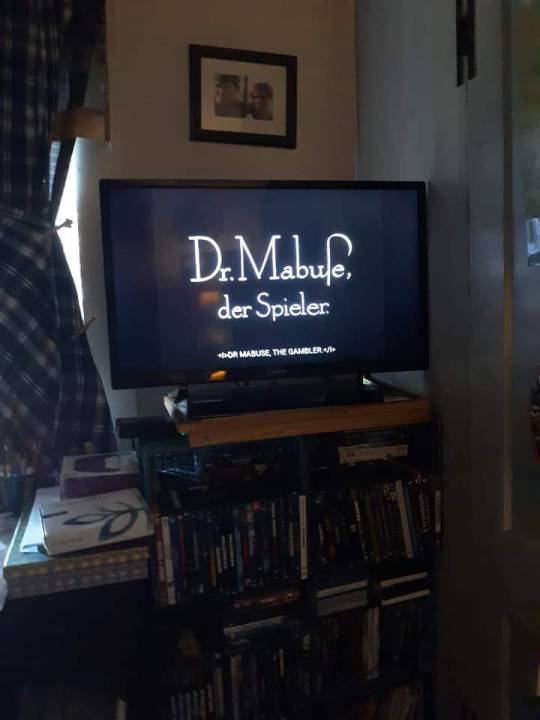
•Dr. Mabuse, der Spieler [also known as Dr. Mabuse the Gambler] (1922)
Directed By: Fritz Lang
Plot Summary: criminal mastermind Dr. Mabuse sets out to run Berlin as a determined detective is keen on stopping him.
Where to Watch: YouTube
While one might think that an almost five hour long silent film is not for them, I encourage everyone to give this film a try. One of the reasons someone might be opposed to silent films is that they feel those films are outdated. However, I would argue that is not the case, especially with this movie. The idea of a criminal, master of disguise and a young, determined detective wanting to take him down is something we see quite often in modern day films. This movie is so worth the watch. It starts off slowly, but the intensity builds and builds as the detective finally starts to catch up to Dr. Mabuse. I never once found myself staring off into space or counting down the minutes until the movie was finally over. I was completely sucked in the entire time. I was so excited when it seemed like Dr. Mabuse would finally be brought to justice, but then I would get upset when he managed to escape somehow. I am very confident that you wouldn't be bored while watching this. Give it a try!
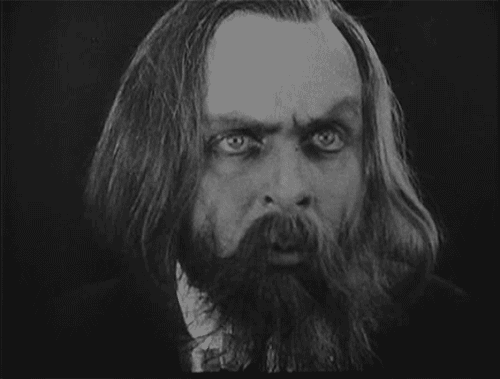
#silent movies#greatmovie#1001 movies#movie review#1920s#1920s art#the phantom carriage#french#french film#filmisnotdead
0 notes
Photo

La Souriante Madame Beudet (Germaine Dulac, 1923)
0 notes
Photo



La souriante Madame Beudet (Germaine Dulac, 1923)
#la souriante madame beudet#the smiling madame beudet#germaine dulac#silent film#directed by women#caps
179 notes
·
View notes
Photo

La souriante Madame Beudet (Germaine Dulac, 1923)
4 notes
·
View notes
